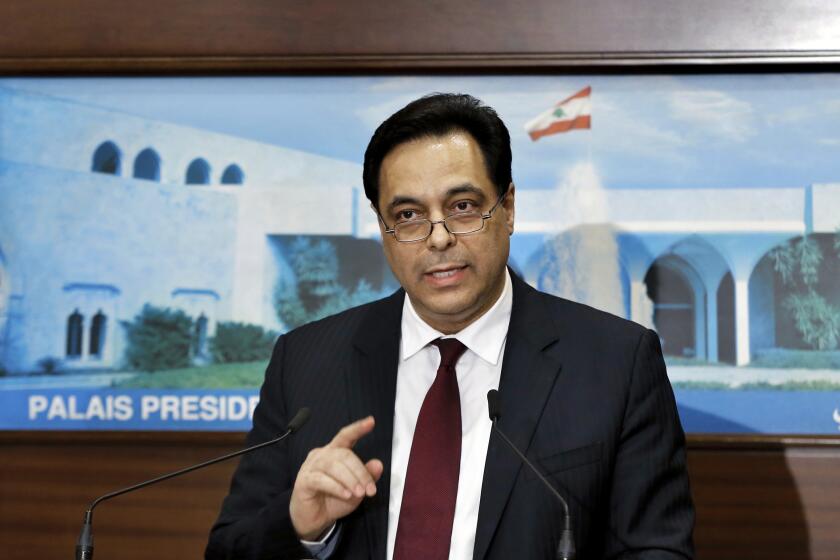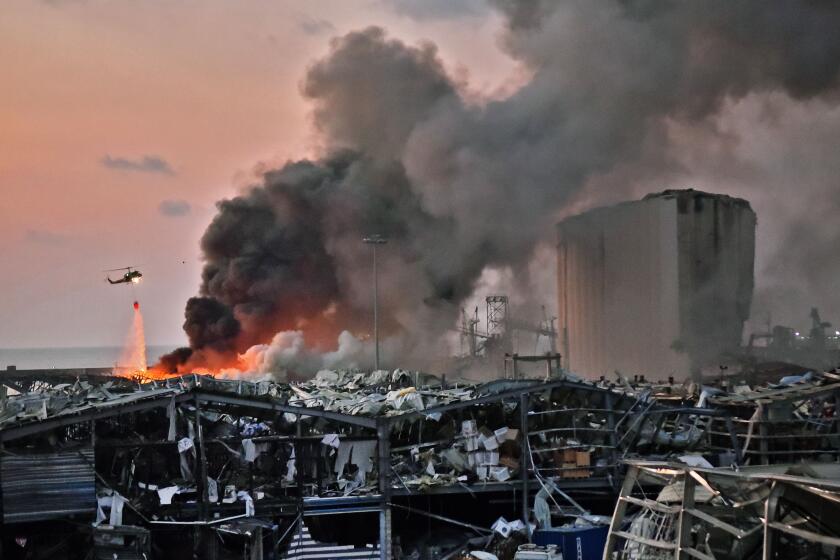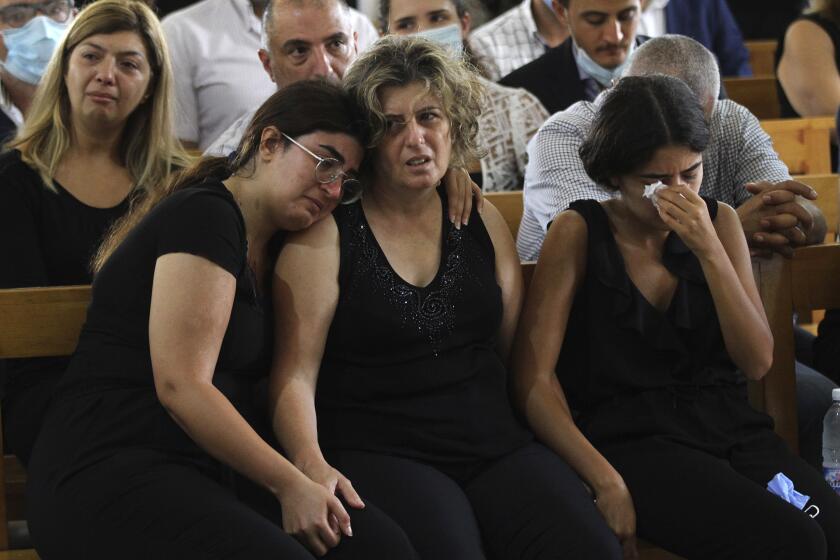The Beirut blast leveled historic neighborhoods. Some fear developers may finish the job
- Share via
- Share via
BEIRUT — Sitting in his reading room, Fadlallah Dagher gestured at a 145-year-old arched window — or what was left of it.
At his side lay the remains of the window’s intricate latticework and wood filigree, shattered to pieces by the enormous explosion that rocked Beirut last week.
“That one second equaled more than 15 years of war,” Dagher said, referring to the 1975-1990 civil war that made the Lebanese capital a byword for destruction.
Dagher, a 60-year-old architect, had spent decades restoring his family’s elegant two-story, 4,800-square-foot house that his great-grandfather had first completed in 1875. In the eastern Beirut neighborhood of Gemmayzeh, it stood as a jewel-like example of the late Ottoman and French Mandate houses of fin-de-siecle Lebanon, with its facade of three arches and wide balconies.
Now Dagher has to start again. The house has major cracks in its sandstone walls, a result of its various sections shifting in different ways from the punch of the blast. Pieces of the original painted plaster had crumbled and were now gathered in a heap near some scaffolding, which was deployed to prop up the ceiling. Cabinets, walls and paintings bear a spatter pattern of divots from a hail of glass shards. One chandelier had plunged onto the bed of Dagher’s 90-year-old mother.
“The third day after the blast, when I realized what had happened, I cracked totally. I was crying all the time,” he said, his rueful smile disappearing at the memory.
After his entire Cabinet resigns following the huge Beirut explosion, Lebanon’s prime minister will hand in his resignation to the country’s president.
The Aug. 4 blast was caused by the ignition of more than 2,750 tons of ammonium nitrate, a common fertilizer and explosive, which caught fire after years of improper storage in Beirut’s port. The explosion created a pressure wave that ripped through the capital, killing more than 170 people and injuring about 6,000; hundreds are still missing.
It also mangled some 8,000 houses, officials say, leaving more than 300,000 people homeless. The areas hardest hit by the explosion, including predominantly Christian neighborhoods such as Gemmayzeh, Mar Mikhael and Achrafieh, Dagher said, also had the highest concentration of historic structures.
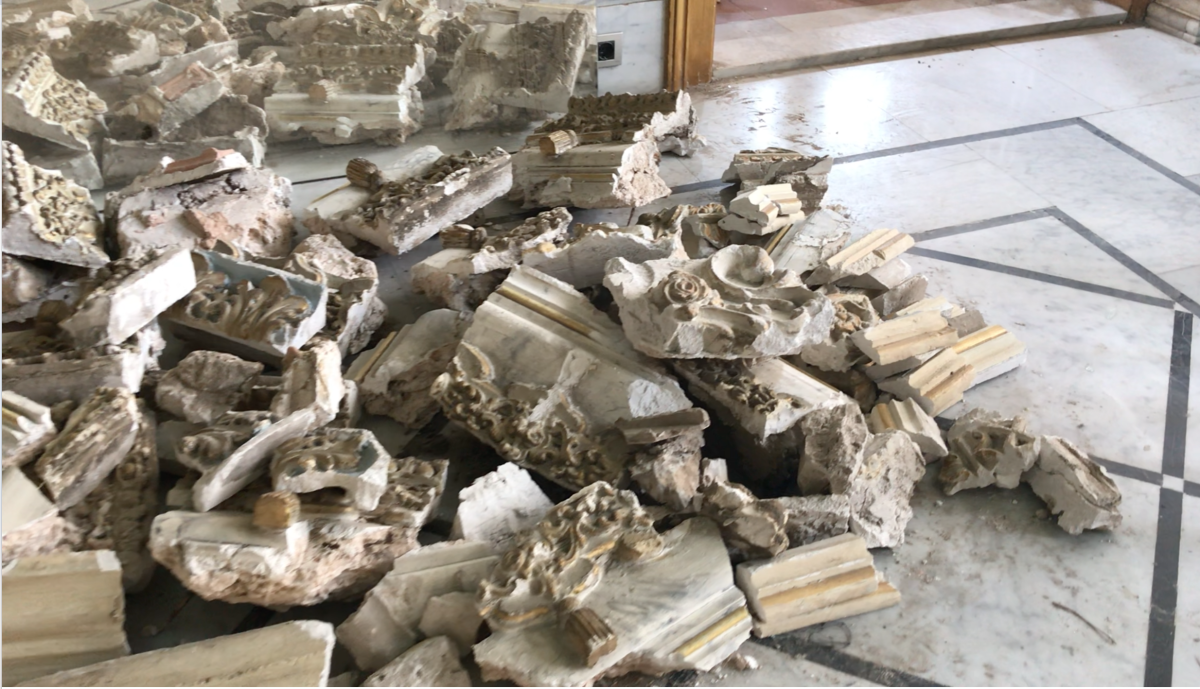
Restoring such architectural splendor, let alone rebuilding lives, will be extremely difficult. Even before the blast, Lebanon was essentially a failed state: Banks had stopped giving money to account holders; the national currency was plummeting against the dollar; prices were skyrocketing; 22-hour power cuts were standard.
With many homeowners in dire straits, Lebanon’s conservationists now also fear an onslaught of opportunistic developers ready to snap up historic buildings for a song, tear them down and turn them into apartment blocks.
Los Angeles Times reporter Nabih Bulos was less than 500 yards from the center of the massive explosion in Beirut. He lived to tell the tale
It wouldn’t be the first time. During the civil war, the capital’s downtown became an artillery zone for rival militias. The area, a sort of Las-Vegas-on-the-Med with a collection of historic buildings, markets and boulevards, became a wasteland denuded of people and commercial activity.
With the war’s end, it became prime real estate again. The government created Solidere, a public-private company that appropriated the land, with the aim of encouraging investment in the ravaged center. But few developers were interested in refurbishing what remained standing. Hundreds of historic buildings initially designated for restoration were razed, with no laws to stop the destruction. (The law only protected so-called “archaeological structures” built before 1700.)
In their stead, high-rise towers came up, with luxury apartments and high-end stores meant more for wealthy Gulf tourists and overseas Lebanese than for locals. Instead of a downtown reborn, the district became, to many, a symbol of Beirut’s postwar ills: corruption, cronyism, incompetent handling of the economy. Anti-government protests, which erupted in October and restarted after the blast, almost always begin there.
Dagher and others now fear a “Solidere 2.0” scenario and its impact not only on structures but also residents of East Beirut. Many of them had lived in this part of the capital from before the civil war; those who didn’t own their apartments were tenants able to stay only because of rent control.
Through tears in Beirut, Lebanese survivors share stories of missing loved ones
“It’s not about me. I’m backed up by my siblings. We all are on the same wavelength. We know what the house means to us,” Dagher said, standing before a set of elegant white-and-blue Chinese plates somehow still hanging on the wall.
“But others … have no way to stay. Those who have no income, who cannot see the economic coherence in keeping such buildings — what are they going to do?” said Dagher, a member of a nonprofit organization working for the last 25 years to protect and restore Lebanon’s ancient and historic buildings.
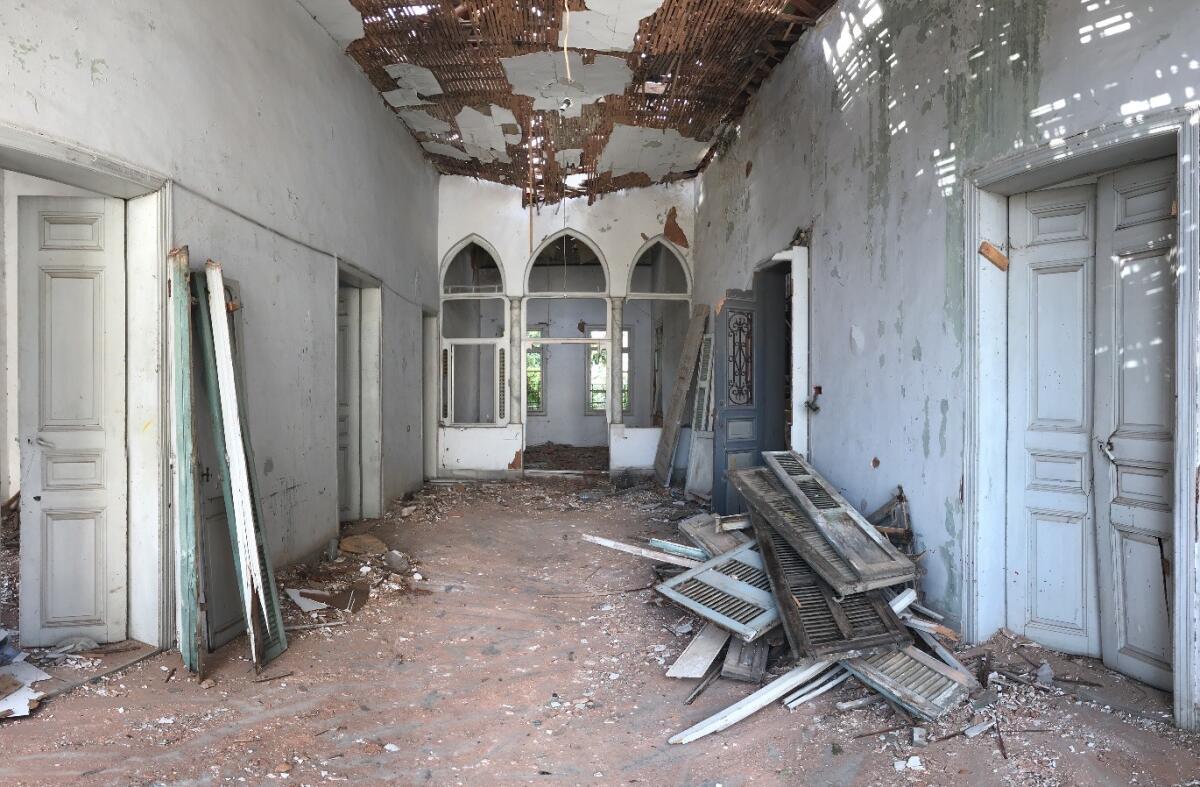
“In modern conservation you talk about clusters,” added Mona Hallak, a fellow architect and preservation activist. “You talk about a way of life, social fabric. You don’t just talk about pretty buildings. Today the problem is there is no law; every single developer can demolish. You can rest assured that not all buildings are dangerous for public safety, but they’ll use this pretext like they used it in the past.”
One building in Gemmayzeh, Hallak said, had already been demolished on questionable grounds, even as rumors abound in East Beirut of brokers circling desperate owners to prey on. On Wednesday, Abbass Mortada, the interim minister of culture, issued an edict stopping any sale of real estate in neighborhoods affected by the blast until after restoration work.
Breaking News
Get breaking news, investigations, analysis and more signature journalism from the Los Angeles Times in your inbox.
You may occasionally receive promotional content from the Los Angeles Times.
Various groups have mobilized to combat unfettered redevelopment, with teams of volunteers assessing buildings’ structural integrity. Earlier this week, George Saad, an associate professor in civil engineering at the American University of Beirut, trudged up a hill to the house of Joelle Abou Merhi in the Mar Mikhael district.
Abou Merhi, a travel agent, has lived all her life in that house. So did her mother, who was born there after her grandfather built it around 1900, she said. It’s now a mess: Entire window frames had catapulted from the walls; glass crunched underfoot; thick wood beams holding up the ceiling of one room had buckled and were now dangerously askew.
Saad walked around the building with two students, probing at its walls (sandstone with plaster covering: structurally sound) and figuring out what repairs could be immediately done (the weakened roof required more serious intervention but was fixable). The house lacked the opulence of Dagher’s home, but Abou Merhi spoke of her loss with seething anger.
“Look, I’m not poor. We’re working people, but we’re not millionaires. ... Our money is unreachable,” she said.
And where to donate to help Beirut
She had cleaned the house in an effort to remain positive, but if she could leave the country, she “wouldn’t say no,” Abou Merhi said. “We’re educated. We’re fluent in three languages. I’ve gone all around the world. I know I could make it anywhere.”
Dagher has no intention of leaving. He sees himself in a race to make sure funds are marshaled to provide short-term relief to homeowners while also coming up with a long-term framework to prevent a repeat of Solidere.
“What’s the plan? They’re going to tear down everything and build a ‘wonderful Dubai’ in its place?” he said, his voice lilting with sarcasm at the mention of the United Arab Emirates’ glitzy desert metropolis.
“This is why we have to go faster.”
More to Read
Sign up for Essential California
The most important California stories and recommendations in your inbox every morning.
You may occasionally receive promotional content from the Los Angeles Times.

